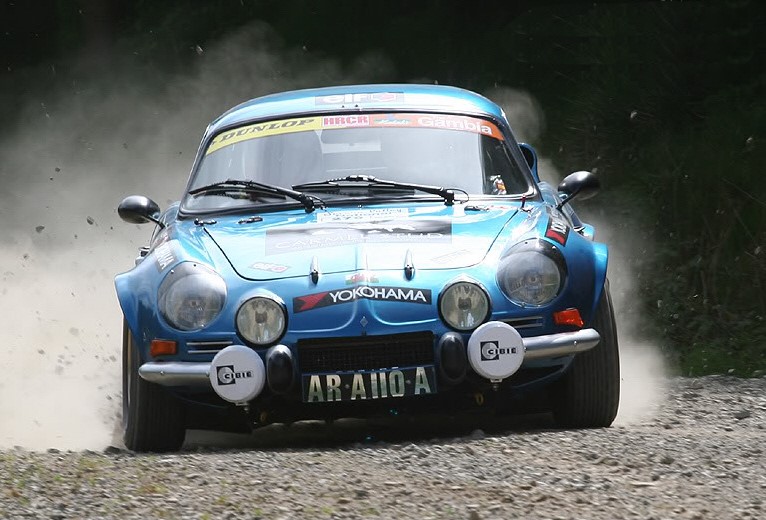Background
The Alpine company name and history both derive from the win that a 24 year old Jean Rédélé achieved on the Alpine Rally of 1954. Jean Rédélé had a fascination with motorsport and rallying in particular and so set about building himself a competitive vehicle based upon the Renault 4CV. The first port of call was a weight saving exercise and this involved replacing the bodywork with initially lightweight aluminium before switching to even lighter fibreglass. This initial model was called the A106 and this lasted a couple of years, before Jean proceeded to modify and sold as the A108.
In 1962 Jean launched the A110, which used the running gear from the Renault 8 and despite the engine still having a capacity of less than 1000cc, the nimbleness of the chassis and the light weight of the car ensured that it was class competitive from the word go in many disciplines. The car continued to evolve and utilise the increasing engine capacities of Renault rising from 850cc to 1100cc then to 1300cc and finally 1600cc. The 1600cc variant being homologated into Group 4 on the 1st January 1970 and so became eligible to compete in the inaugural International Rally Championship for Manufacturers.
The A110’s debut on the Monte Carlo Rally did not go according to plan, with one of their drivers missing a passage control on the all important concentration run and the other driver crashing out. It was only a matter of time before success came though and with wins on the San Remo, Acropolis and Corsica rallies plus other consistent finishes ensured that Alpine finished the year 2nd in the championship only 2 points behind the mighty Porsche factory team.
1971 saw the introduction of 1800cc engines, first used in works prototype development variants of the A110 on the Coupe des Alpes and the TAP Rally, unfortunately this uplift in power was not matched by an increase in strength to the gearbox and DNFs were a regular occurrence.
1973 saw Renault take a majority stake in Alpine and the International Rally Championship for Manufacturers give way to the World Rally Championship and with the reliability problems solved, the little A110 took the inaugural World Rally Championship with wins on the Monte Carlo, Portugal, Morocco, Greece, San Remo and Corsica rallies.
This Car
Was originally purchased from the factory on 25 July 1972 by Peter Smith as used separate body/ chassis and engine gearbox units. During the discussion with the factory the body/chassis unit was identified as the 'TAP' car, that is the car that won the TAP rally in 1971, and the original chassis number was removed at the factory.
The car was re-built by Peter and re-registered in the UK on 29 September 1972 with the original chassis no.17497 and engine no. 2214. After registration in the UK the car was badly damaged by fire during an event in 1974 when driven by John Ingram and remained untouched for many years.
In 2005, using a lightweight bodyshell by Dominique Frossard it was rebuilt by Nigel Hollier (ex works driver) to historic rally spec and with the approval of Jacques Cheinisse, the Alpine Works Competition manager revised to cope with the rigours of the RAC.
Technical :-
Engine : Four cylinder, rear mounted front-engine, overhead valve, two valves per cylinder, 175 bhp, 1800cc
Induction : Naturally Aspirated, with twin weber carburettors
Transmission : Rear Wheel Drive, five speed gearbox

